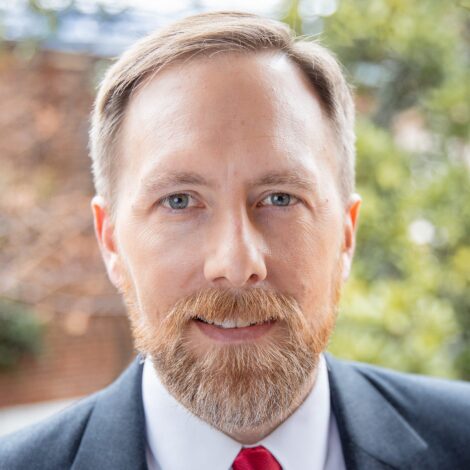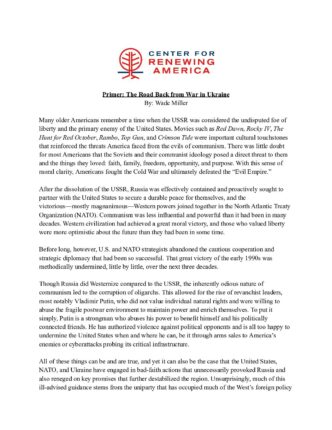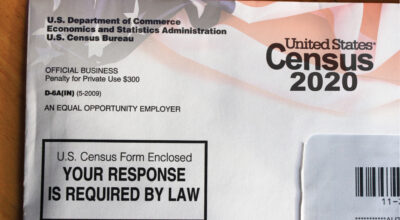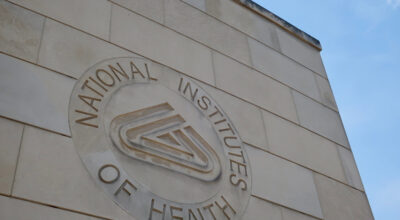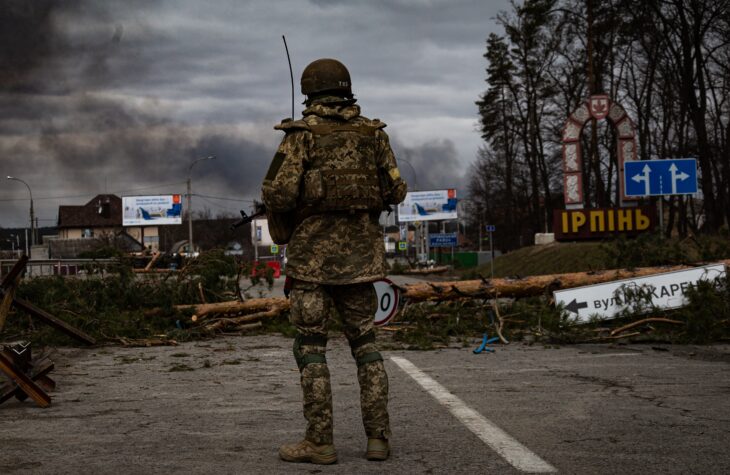
Primer: The Road Back from War in Ukraine
Many older Americans remember a time when the USSR was considered the undisputed foe of liberty and the primary enemy of the United States. Movies such as Red Dawn, Rocky IV, The Hunt for Red October, Rambo, Top Gun, and Crimson Tide were important cultural touchstones that reinforced the threats America faced from the evils of communism. There was little doubt for most Americans that the Soviets and their communist ideology posed a direct threat to them and the things they loved: faith, family, freedom, opportunity, and purpose. With this sense of moral clarity, Americans fought the Cold War and ultimately defeated the “Evil Empire.”
After the dissolution of the USSR, Russia was effectively contained and proactively sought to partner with the United States to secure a durable peace for themselves, and the victorious—mostly magnanimous—Western powers joined together in the North Atlantic Treaty Organization (NATO). Communism was less influential and powerful than it had been in many decades. Western civilization had achieved a great moral victory, and those who valued liberty were more optimistic about the future than they had been in some time.
Before long, however, U.S. and NATO strategists abandoned the cautious cooperation and strategic diplomacy that had been so successful. That great victory of the early 1990s was methodically undermined, little by little, over the next three decades.
Though Russia did Westernize compared to the USSR, the inherently odious nature of communism led to the corruption of oligarchs. This allowed for the rise of revanchist leaders, most notably Vladimir Putin, who did not value individual natural rights and were willing to abuse the fragile postwar environment to maintain power and enrich themselves. To put it simply, Putin is a strongman who abuses his power to benefit himself and his politically connected friends. He has authorized violence against political opponents and is all too happy to undermine the United States when and where he can, be it through arms sales to America’s enemies or cyberattacks probing its critical infrastructure.
All of these things can be and are true, and yet it can also be the case that the United States, NATO, and Ukraine have engaged in bad-faith actions that unnecessarily provoked Russia and also reneged on key promises that further destabilized the region. Unsurprisingly, much of this ill-advised guidance stems from the uniparty that has occupied much of the West’s foreign policy ecosystem for the past three decades. The interventionism and “forever wars” of the Clinton, George W. Bush, Obama, and Biden administrations were animated by globalists and neoconservatives who have long dominated key departments, agencies, think tanks, and corporate entities—a diplomatic and military-industrial complex—aimed at constant provocation and engagement at all times. The interests of the United States have been either subordinated to other interests or omitted from their decision-making processes entirely.
Indeed, one can recognize Russia as the geopolitical foe that it is and be fully committed to the success of U.S. strategic superiority against it while also recognizing the foreign policy blunders of U.S. and NATO leaders that led to the current war between Russia and Ukraine. Admitting that there is plenty of blame to go around in the current conflict and that it is not just the fault of Russian neo-imperialists is essential to restoring the successful containment strategy (more publicly recognized as “cautious cooperation” or “strategic diplomacy” at the time) that led to the United States’ victory in the Cold War.
President Ronald Reagan and his team largely got containment right, only to have their success undercut by the Clinton, Bush, Obama, and Biden administrations. Success today, therefore, requires a foreign policy similar to the early 1990s, when the United States, in good faith, worked directly with Russia to create a workable peace plan that satisfied the security concerns of both countries.
Below is a timeline outlining key events and dates that led to the conflict that President Donald Trump is now trying to solve. Note the various actions that often precipitated Russian aggression. Recognizing those strategic errors does not equate to apologizing for Russian aggression; instead, it is necessary to understand them to achieve stable containment. While incomplete, the timeline makes the case that it was and is in the United States’ interest to maintain a stable buffer zone between Russia and NATO. Ignoring this reality for the better part of three decades precipitated the current war in Ukraine, and only by acknowledging it can stable containment again be achieved.
End of Cold War; Collapse of the Soviet Union
- July 1987
- President Reagan: “Today, a struggle that began in Ukraine seventy years ago is taking place throughout the Soviet Empire. . . . All captive nations deserve and require our special support. For those seeking to enjoy humanity’s birthright of liberty, independence, and justice, we serve as guardians of their dream.”
- This is the culmination of an attempt to bring an end to the Soviet Union.
- President Reagan: “Today, a struggle that began in Ukraine seventy years ago is taking place throughout the Soviet Empire. . . . All captive nations deserve and require our special support. For those seeking to enjoy humanity’s birthright of liberty, independence, and justice, we serve as guardians of their dream.”
- April–November 1989
- Fall of communism in Eastern Europe
- Soviet satellites declare sovereignty.
- December 1989
- First meeting between President George H. W. Bush and Soviet leader Mikhail Gorbachev in Malta to discuss ending the Cold War
- February 1990
- U.S. Secretary of State James Baker assures Gorbachev regarding NATO expansion, “not an inch eastward.”
- Baker: “We understand that not only for the Soviet Union but for other European countries as well it is important to have guarantees that if the United States keeps its presence in Germany within the framework of NATO, not an inch of NATO’s present military jurisdiction will spread in an eastern direction.”
- Claims are made that Baker’s comments only pertain to NATO troops in East Germany.
- Hans-Dietrich Genscher, the former foreign minister of West Germany, clarifies Baker’s statement on tape: “No. No. I don’t just mean within Eastern Germany. I mean anywhere to the east.”
- Western leaders such as Helmut Kohl, Margaret Thatcher, Douglas Hurd, Francois Mitterrand, and George H. W. Bush repeat similar pledges.
- Russia is under the impression that there is a Western pledge not to enlarge NATO.
- CIA analyst Melvin Goodman issues a memo regarding the conversations between Baker and Soviet Foreign Minister Shevardnadze: “There would, of course, have to be ironclad guarantees that NATO’s jurisdiction or forces would not move eastward. And this would have to be done in a manner that would satisfy Germany’s neighbors to the east.”
- U.S. Secretary of State James Baker assures Gorbachev regarding NATO expansion, “not an inch eastward.”
- June 1990
- Margaret Thatcher: “We must find ways to give the Soviet Union confidence that its security would be assured. . . . CSCE [the Conference on Security and Cooperation in Europe] could be an umbrella for all this, as well as being the forum which brought the Soviet Union fully into discussion about the future of Europe.”
- July 1990
- Ukraine begins to assert claims of sovereignty.
- August 1991
- President Bush gives a speech more popularly known as the “Chicken Kiev” speech, in which he expresses concerns about ultranationalist movements arising in Kiev that do not want to develop partnerships in the strategic peace plans in the region.
- Bush: “Whatever the course, however long the process took, and whatever its outcome, I wanted to see stable, and above all peaceful, change. I believed the key to this would be a politically strong Gorbachev and an effectively working central structure. The outcome depended on what Gorbachev was willing to do. If he hesitated at implementing the new agreement [i.e., the Union of Sovereign States Treaty] with the republics, the political disintegration of the Union might speed up and destabilize the country. . . . If he appeared to compromise too much, it might provoke a coup—although there was no serious signs of one. I continued to worry about further violence inside the Soviet Union, and that we might be drawn into conflict.”
- Ukraine declares independence.
- December 1991
- Soviet Union collapses; Gorbachev resigns.
- A Ukrainian referendum on independence passes with over 90 percent support. It is supported less overwhelmingly in the eastern parts of Ukraine.
- January–February 1992
- President of Russia Boris Yeltsin visits the United States and meets President Bush. A joint proclamation states that the United States and Russia don’t see each other as potential adversaries and are beginning a new era of “friendship and partnership.”
At this point, durable and effective containment of Russia has occurred. Yeltsin and others are working closely with the United States on talks about holding elections in former Soviet republics and stabilizing currencies. The strategy of Reagan, Bush, and Kennan has worked. It also lays the groundwork for continued military reduction in Eastern Europe and Russia.
Not long after, partly due to some hardliners within the Bush administration but also due to the policies of the incoming Clinton administration and in later administrations, the containment posture begins to falter.
Western NATO Expansion Begins
- April 1993
- Newly elected President Bill Clinton meets with Eastern European leaders, who urge NATO expansion.
- October 1993
- John Podesta and others within the Clinton administration begin formulating internal policies to expand NATO into former Soviet satellite countries.
- Clinton’s national security advisor, Anthony Lake, warns Clinton that moving NATO eastward without buy-in from Russia would have negative consequences.
- The U.S. position is seen as shifting from “containment” to “enlargement,” as expressed in September 1993 in a speech by Lake that was ghostwritten by Antony Blinken (national security advisor to Vice President Joe Biden, deputy national security advisor to President Barack Obama, deputy secretary of state to President Obama, and secretary of state to President Biden).
- January 1994
- President Clinton states in a speech, “The question is no longer whether NATO will take on new Members but when and how.”
- Clinton also begins promoting the “Partnership for Peace,” a plan in which NATO membership is now broadly open, including to former Soviet satellite states.
- Clinton also signs on to the “Trilateral Statement” with Yeltsin to disarm Ukraine of warheads.
- Though Yeltsin signs on, many in Russia see the statement as a sign of U.S. promises in the region because of the structured U.S. involvement in Ukraine included in the agreement.
- December 1994
- The Budapest Memorandum on Security Assurances is signed by Belarus, Kazakhstan, Ukraine, Russia, the United States, and the United Kingdom.
- It involves assurances by the United States, United Kingdom, and Russia to respect the sovereignty and territorial integrity of Ukraine, Belarus, and Kazakhstan.
- It exists in an environment in which NATO had previously pledged it would not expand eastward, making it clear that the stability of the agreement could very well be predicated on adherence to past promises.
- The Budapest Memorandum on Security Assurances is signed by Belarus, Kazakhstan, Ukraine, Russia, the United States, and the United Kingdom.
- October 1996
- The “father of containment,” George Kennan, calls the plan of NATO enlargement a “strategic blunder of epic proportions.”
- Seeing NATO expansion on the horizon and fearing it will lead to anti-Western political regimes in Russia, Kennan, in an article in The New York Times the following year, famously argues that it “would be the most fateful error of American policy in the entire post-Cold War era.”
- December 1996
- NATO invites Hungary, Poland, and the Czech Republic to apply for membership.
- April 1997
- Ukraine signs on to a “Distinctive Partnership” plan with many NATO countries that includes NATO training facilities in Ukraine.
- Though Ukraine is not admitted to NATO, this is a provocative action that could be perceived as backpedaling from previously agreed-upon neutrality.
- Maintaining Ukraine’s position as a buffer region that, at the very least, does not pick a side is key to the containment strategy of Russia remaining stable.
- May 1997
- Russia signs an agreement with NATO stating that should NATO expand, new members will not posture its military forces and stockpiles in a manner that could be seen as threatening to Russia. The agreement also bars any additional deployments of combat forces on a permanent basis.
- This is a clear attempt to work with the Clinton administration and make the new arrangement work for both the United States and Russia.
- June 1997
- Many members of Congress warn the Clinton administration that NATO expansion would complicate efforts to demilitarize the threats of nuclear weapons in the region.
- A group of foreign policy experts, academics, military officers, and others sign a letter to President Clinton warning against NATO expansion. Signatories include Susan Eisenhower (granddaughter of President Dwight D. Eisenhower), Robert McNamara, and Paul Nitze. The letter states that:
- “NATO expansion will make it much more difficult to establish the atmosphere of trust required for Moscow to agree to additional transparency measures.”
- “a policy error of historic proportions”
- “We believe that NATO expansion will decrease allied security and unsettle European stability.”
- March 1999
- NATO expands.
- Czech Republic admitted
- Hungary admitted
- Poland admitted
- President Yeltsin accepts this NATO enlargement but clarifies that Russia opposes NATO expansion to the Baltic countries and the former bodies of the Soviet Union.
- After Clinton’s comments about U.S. and NATO involvement in Kosovo, Yeltsin tells Clinton that it is becoming more challenging to maintain the trust of the people and elected officials in Russia regarding the United States.
- NATO expands.
- December 1999
- Yeltsin picks Vladimir Putin as his replacement following his resignation. Many will credibly argue that Yeltsin chose Putin because it was clear that the West had reneged on its promises, and he wanted more of a hardliner to succeed him and push back.
- March 2000
- Vladimir Putin is elected president of Russia in a political environment where Russians believe Yeltsin was not standing up to what they see as broken promises by the United States and NATO.
- July 2000
- CIA Director Robert Gates (speaking at the University of Virginia about Clinton administration failures): “And at a time of a special humiliation and difficulty for Russia, pressing ahead with expansion of NATO eastward, when Gorbachev and others were led to believe that wouldn’t happen, at least in no time soon, I think probably has not only aggravated the relationship between the United States and Russia but made it much more difficult to do constructive business with them. I think between that and the bombing of Belgrade we have really antagonized the Russians in a major way and I think those are two things that the Bush administration (George H.W. Bush) would not have done (if he won reelection), when all is said and done.”
- September 2001
- Putin is one of the first to call President Bush after 9/11, seeking a framework in which to oppose and combat radical Islam mutually.
- October 2001
- The Bush administration announces its intention to withdraw from the Anti-Ballistic Missile Treaty. While there are good arguments for why this is necessary from a broader U.S. security perspective, it is seen as another in a long series of actions causing Russia to lose trust in the United States’ intentions, as defensive missile systems start to go up in NATO countries and are seen by the Russians as a threat to the stability of the region.
- December 2001
- The Bush administration withdraws from the Anti-Ballistic Missile Treaty.
- May 2002
- Departing from the agreed-upon policy of neutrality, Ukraine formally seeks NATO membership.
- November 2003
- Rose Revolution in Georgia
- Mikhail Saakashvili storms the Georgia Parliament with his followers, and a peaceful revolution causes the collapse of Soviet-era leadership in Georgia.
- New elections are held, and Western nongovernmental organizations (NGOs) such as the National Democratic Institute and the International Republican Institute work closely with activists before and after the election.
- Saakashvili is elected president and commits his country to NATO and the EU.
- March 2004
- Greater NATO expansion:
- Bulgaria admitted
- Estonia admitted
- Latvia admitted
- Lithuania admitted
- Romania admitted
- Slovakia admitted
- Slovenia admitted
- Greater NATO expansion:
- November 2004–January 2005
- Orange Revolution in Ukraine
- Western NGOs support a peaceful revolution in Ukraine that results in Viktor Yushchenko’s election as Ukraine’s president. Yushchenko is committed to gaining membership in NATO.
- These NGOs include the Organization for Security and Cooperation in Europe (OSCE), Freedom House, the National Democratic Institute, the International Republican Institute, and George Soros’s Renaissance Foundation.
- The Ukrainian Supreme Court invalidates the election results. The candidate favored by NATO was poisoned by dioxin, and many believe this was done at the direction of Putin.
- The NATO-backed candidate wins the second election, but Russia sees this as a coup perpetrated by the CIA.
- February 2007
- Putin gives a speech in Munich expressing his frustration with the unipolar world order in which he sees the eastern expansion of NATO; the actions of the OSCE, which was the successor to the CSCE; and other actions as the basis for distrust and as a signal that Russia may be entering a new era where it would defend its interests. If anyone had missed the hints that the United States had failed to maintain Russia as a partner in regional stability, this speech makes it crystal clear that stable containment is no longer in place.
- July 2007
- The United States and Russia meet to discuss missile systems in Eastern Europe. Putin proposes a joint system, but Bush declines. This decision, probably merited in a vacuum, created further distrust for the U.S. in the eyes of Russian decision-makers, considering the environment in which it was made, and after years of backtracking on promises made to Russia in the region.
- April 2008
- NATO summit in Bucharest
- The United States and many NATO allies agree that Georgia and Ukraine will one day be NATO members.
- NATO members invite Albania and Croatia to join and agree that expansion should continue.
Containment of Russia Fails; Hostility Resumes
- August 2008
- Russo-Georgian war
- Russia claims its citizens are being targeted in South Ossetia and Abkhazia by Georgian forces; Georgia claims Russian peacekeeping troops are targeting Georgian civilians and planning to invade Georgia.
- The United States supports Georgia throughout the war and condemns Russia’s actions.
- After Russia invades Georgia in August 2008, the United States substantially increases its assistance to Georgia.
- Total U.S. assistance to Georgia for fiscal years 2008–2009 amounts to $1.04 billion.
- April 2009
- Greater NATO expansion:
- Albania admitted
- Croatia admitted
- Greater NATO expansion:
- February 2010
- The Party of Regions, led by Viktor Yanukovych, emerges victorious in the Ukrainian elections.
- Yanukovych’s central platform is improved ties with Russia. He strongly opposes entry into NATO and favors a neutral non-bloc status. Many will make the debatable argument that he is committed to actual neutrality. In that environment, however, even if Yanukovych did lean towards Russia, Western powers see any posture of neutrality as picking a side. After 2008 Ukraine was in a perilous position of balancing both sides to avoid escalation.
- April 2010
- In exchange for a reduced price on Russian gas, Yanukovych agrees to extend the lease for the Russian naval base in Crimea for twenty-five years.
- November 2013–February 2014
- Yanukovych announces his decision to postpone signing the European Union–Ukraine Association Agreement.
- Ukrainian opposition, supported by the EU and the United States, start to protest in Kiev.
- Western NGOs and Obama officials directly support the protestors. For example, Assistant Secretary of State for Europe Victoria Nuland is captured in news photographs during demonstrations in Kiev handing sandwiches to protestors.
- Ukraine slides into lawlessness as Western support for the protestors increases.
- Yanukovych refuses to accept the opposition’s demands, and the EU agreement collapses in February 2014.
- Nuland and Geoffrey Pyatt, the U.S. ambassador to Ukraine, have a phone call between them leaked in which it appears they are both discussing various color revolution activities to move the needle in the Ukrainian elections.
- Yanukovych leaves Kiev after claiming to have been the target of a coup d’état.
- The Ukrainian parliament claims this is tantamount to a resignation and installs a pro-Western regime.
- Ukraine’s new government makes it clear that Ukraine’s future lies with the West.
- Moscow is certain this will lead to losing its Crimean base for its Black Sea fleet.
- Russia invades Crimea.
- March–April 2014
- Within weeks of the leaked phone call with Nuland, Russia annexes the Crimean peninsula.
- Pro-Russian fighters in Donbas begin fighting Ukrainian military forces.
- President Obama and the EU impose two rounds of sanctions in March and April, targeting primarily Russian individuals and companies involved in the annexation, and they suspend Russia’s membership in the G8.
- April 2014–2018
- Fighting begins in the Donetsk and Luhansk regions of Ukraine between pro-Russian separatist forces and Ukrainian government forces.
- The conflict continues through 2018, despite numerous ceasefires and internationally mediated meetings (Minsk 1 and 2) between Ukraine and Russia.
- February 2016
- Public accounts appear of U.S. military units on the ground in Ukraine advising Ukrainian troops. This demonstrates to Russia that robust U.S. military operations are occurring in a country that Russia was assured would remain neutral so that Russia could convincingly argue that its security concerns were being respected.
- June 2016
- The EU publishes a paper expressing opposition to Russia’s actions and pledges to bolster defensive relationships, including in Eastern Europe.
- September 2016
- Vice President Joe Biden: “We’ve already lost that piece on Crimea. We cannot—we cannot let Russia succeed in what their overall objective is. They don’t want to invade. They want to destabilize the government, bring it down, and as a result get everything they had before and Europe going, well, that was—that was too bad.”
- November 2016
- Donald Trump is elected president of the United States and takes a firm stance with Russia but also professes a desire to reset and improve relations with Russia.
- Though minor flare-ups will occur, the situation in Ukraine calms down after Trump is elected, compared to the initial 2014 fighting.
- February 2019
- President of Ukraine Petro Poroshenko signs a constitutional amendment committing the country to becoming a member of NATO and the EU.
- April 2019
- The Ukrainian comedian Volodymyr Zelenskyy is elected president of Ukraine,
- Throughout the election campaign, he avoids serious interviews and discussions about policy, preferring to post lighthearted videos on social media.
- September 2019
- A call transcript between Trump and Zelenskyy is released after the United States pauses some funding to Ukraine to analyze whether funds were being used in a corrupt manner or not for intended purposes. Though the specifics of the call are proper and legally permissible, the American left uses it to hide the corruption between many in the deep state and Ukrainian oligarchs, eventually leading to a politically motivated impeachment of Trump.
- The broader public starts to become aware of the Bidens’ and other elites’ corrupt political ties to Ukraine, which partially explain the extent to which decisions that are not in the strategic interest of the United States but rather in the monetary interests of connected elites are being made.
- Ukraine is now far from being a buffer state as initially intended. The billions of dollars that could enrich U.S. political elites are now the dominating factor in the United States’ foreign policy decision-making.
- Trump is targeted by the deep state when he insists that the Ukrainian government root out such corruption. To this day, no one can satisfactorily defend President Trump’s impeachment for pausing funding to investigate this corruption.
- November 2020
- Joe Biden is declared the victor of the 2020 presidential election.
- February 2021
- In a speech to the Munich Security Conference on February 19, President Biden argues that the only way to deal with Russia is to push back hard.
- March 2021
- When asked if he thinks Putin is a killer, Biden tells ABC, “Mmm hmm, I do.” Biden also says he has come to know Putin “relatively well” over the years and doesn’t believe he has a soul.
- April 2021
- Russia’s top diplomat, Sergei Lavrov, says on April 1 that its relations with the United States and its allies have “hit bottom.”
- September 2021
- Zelenskyy tells reporters at the White House, “I would like to discuss with President Biden here his vision, his government’s vision of Ukraine’s chances to join NATO.”
- A U.S. aid package to the Ukrainian military is agreed to.
- November 2021
- Putin demands that any country that joined NATO after 1997 have NATO weapons and troops removed and insists on a guarantee that Ukraine will not become a NATO member.
- December 2021
- In a talk between the two leaders, Biden blames Russia for the escalation around Ukraine. Putin says that it is NATO and the West that trampled on agreements and assurances by funding a military buildup on Russia’s border with Ukraine. Putin claims this is the culmination of decades of broken promises on not expanding NATO and not arming buffer states against the security interests of Russia.
- Putin later warns Biden that it would be a dangerous escalation if the United States were to impose another round of sanctions against Russia.
- January 2022
- Russia amasses forces on the Ukrainian border, with troops now surrounding large parts of the country.
- NATO and the United States make it clear to Putin that they do not intend to pull NATO forces out of Eastern Europe and will not commit to not adding Ukraine to NATO in the future.
- February 2022
- Russian forces invade Ukraine on February 24 in a mass multipronged assault by land, sea, and air from the north, east, and south as Putin announces the launch of a “special military operation” there.
- February 2022–January 2025
- After the invasion and for over three years, the Biden administration and Congress provide Ukraine with direct financial and military support.
- Finland and Sweden apply for NATO membership.
- As of January 2025, Congress has appropriated nearly $174 billion from fiscal years 2022 through 2024 in supplemental appropriations in response to the war in Ukraine.
- This includes allowing the Ukrainian neo-Nazi Azov Brigade to receive U.S. training despite a 2018 congressional ban against allowing U.S. tax dollars from going to weapononry and training to the Azov Brigade. It would later be argued by the Biden administration that the Azov Brigade could be trained because they no longer met the criteria for prohibition.
- This support has prolonged the war and resulted in more death and destruction.
- November 2024–January 2025
- Donald Trump emerges victorious in the 2024 presidential election and sworn in as president of the United States.
- February 2025
- Trump and Zelenskyy clash in an Oval Office meeting about bringing a peaceful end to the conflict.
- March-April 2025
- President Trump is attempting to achieve peace for Russia and Ukraine by recognizing political realities and reversing thirty years of bad foreign policy.
- Russia and Ukraine rank highly on corruption indexes, making them both bad actors. But ignoring Russian security interests in any attempt to achieve a durable peace is a recipe for more failure.
- Many NATO countries, such as Turkey and North Macedonia, rank close to Russia and Ukraine in terms of corruption.
- Admitting that many are to blame, including the United States, NATO, Europe, and Ukraine, is necessary to craft a new containment strategy that works for both the United States and Russia.
- President Trump is navigating these dynamics and seeking to bring peace and put America first by reasserting the successful containment policies of the late 1980s and early 1990s.
- President Trump is attempting to achieve peace for Russia and Ukraine by recognizing political realities and reversing thirty years of bad foreign policy.

